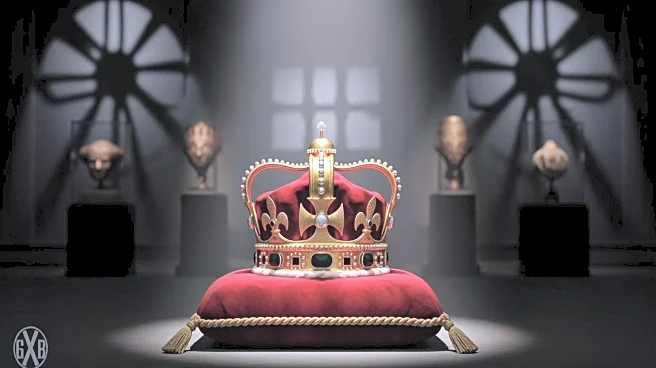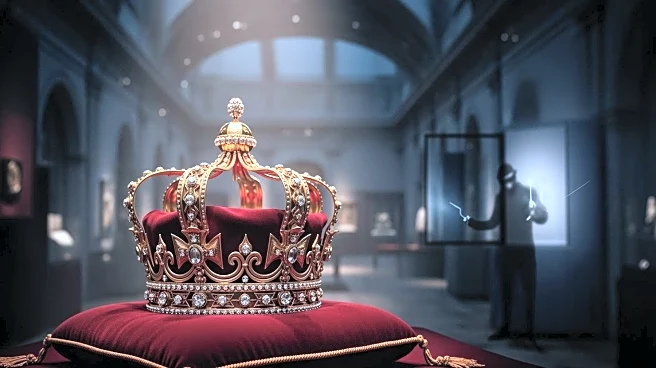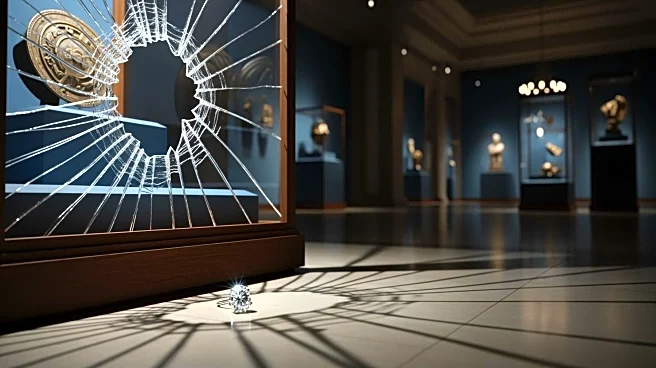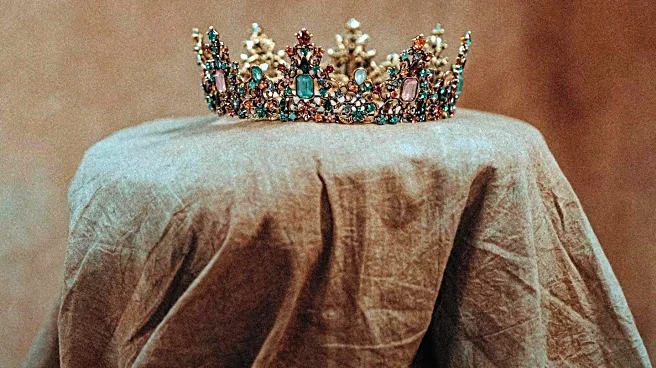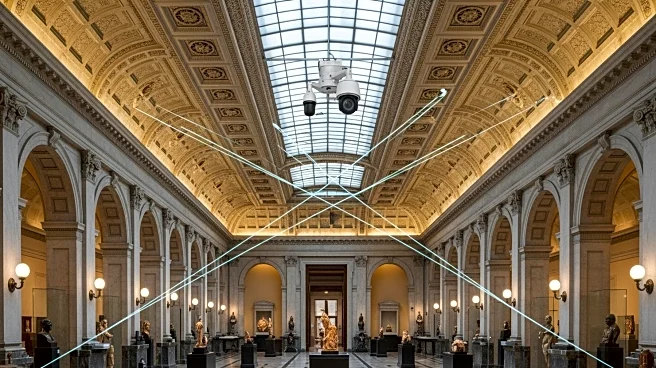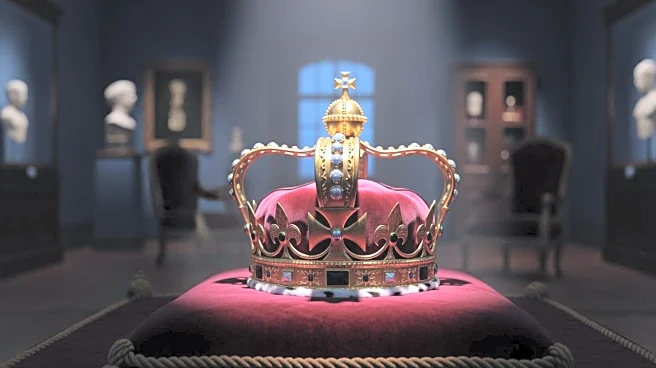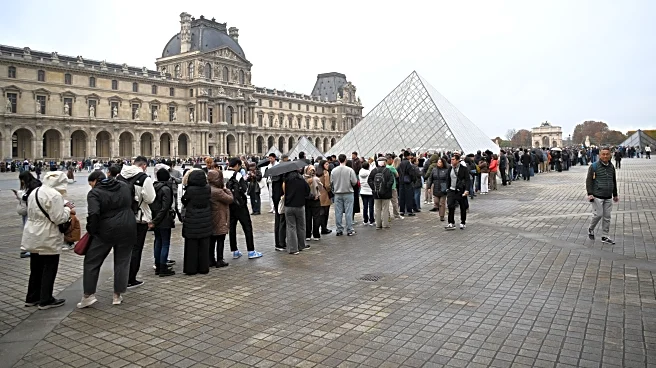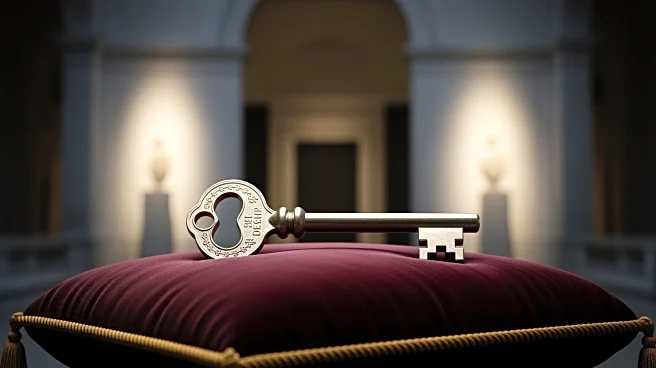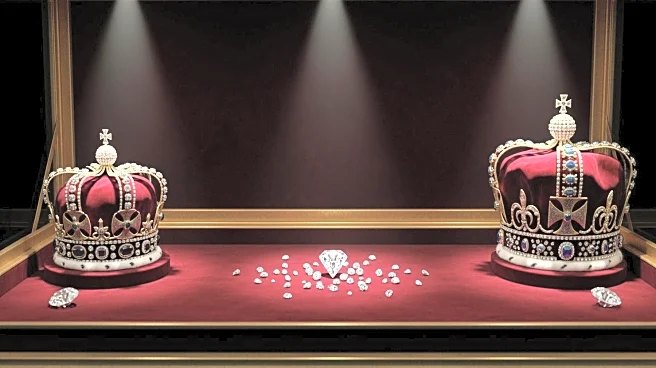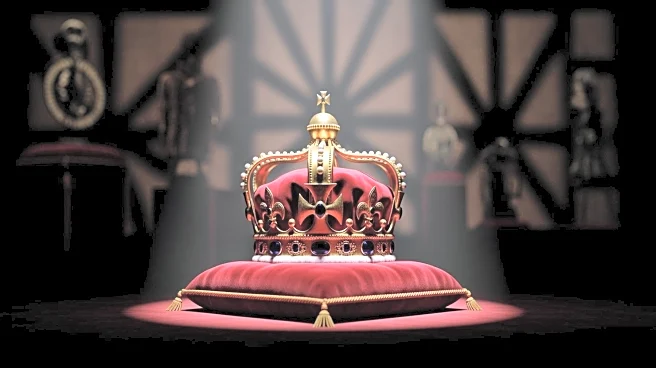What's Happening?
A daring heist at the Louvre Museum in Paris resulted in the theft of nine historic items from the French Crown Jewels collection. The theft occurred in the Apollo Gallery, where thieves broke into high-security display cases and stole items including
a sapphire diadem, an emerald necklace, and a diamond-encrusted brooch. The stolen pieces are of significant historical value, having belonged to figures such as Napoleon's second wife, Marie-Louise, and Empress Eugénie. The theft has been described as a 'national disaster' for France, with concerns that the recognizable pieces may be dismantled and sold separately.
Why It's Important?
The theft of these historic jewels represents a significant cultural loss for France, as they are considered national treasures. The incident highlights vulnerabilities in museum security and raises concerns about the preservation of cultural heritage. The stolen items are not only valuable but also irreplaceable, with deep historical connections to France's past. The potential dismantling and sale of these jewels could mean the permanent loss of important artifacts, impacting historical scholarship and cultural pride.
What's Next?
Authorities are likely to intensify efforts to recover the stolen items and apprehend the thieves. The incident may prompt museums worldwide to reassess and strengthen their security measures to prevent similar occurrences. The cultural ministry and law enforcement agencies will likely collaborate on strategies to track the stolen jewels and prevent their sale on the black market.
Beyond the Headlines
The theft raises ethical questions about the protection of cultural heritage and the responsibilities of institutions in safeguarding historical artifacts. It also underscores the ongoing challenges faced by museums in balancing public access with security needs.
